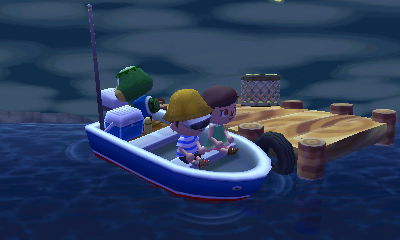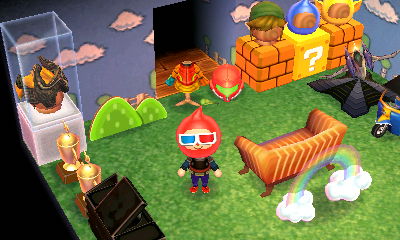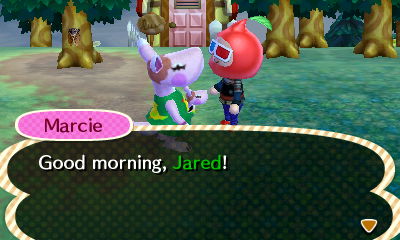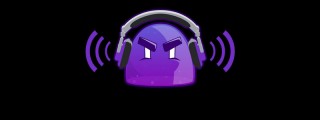It’s tricky to describe why someone should play an Animal Crossing game without sounding like a crazy person. You can’t win the game, there are no sweet combos or finishing moves, there’s really not even all that much world building to be done. Your days spent within the game will mostly consist decorating your house, catching fish and bugs, and shaking trees to get fruit and maybe, if you’re lucky, furniture. Convincing the skeptic is a challenge indeed, let me see if I can pull it off.
Even those who’ve never played an Animal Crossing game before are probably aware that the game’s big hook is its real time based nature. Start up the game first thing in the morning? It’ll be morning in game. Playing in December? Expect to see some snow fall. Don’t play for four months? Don’t be surprised when you log in to find your town overgrown with weeds and citizens who barely recognize you.
New Leaf opens with you riding on a train to your new home when a nosy cat named Rover (Fans will recognize him from some previous installments in the series.) decides to get all up in your business. Rover will run you through a gauntlet of questions, determining your gender, name, and the name of the town you’re en-route to. Once he’s worked it all out he’ll go back to minding his business and you’ll be deposited in your newly created town, which is derived from one of several layouts you picked before boarding that fateful train.
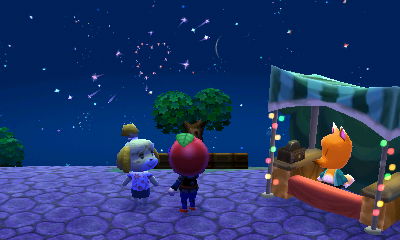
Different times of the year produce different events. Here you can see a fireworks show that ran several weeks through the summer.
Upon exiting the station you will be greeted by all the current residents of the town and you will learn that you have been mistaken for their much anticipated mayor. Protest all you like, whether you like it or not you’re in charge of this town.
So what does being a mayor entail? Well your first task will be to gather the approval of all the citizens in town. This phase essentially acts as an introduction to the world, as you gather approval by doing the things that will make up your normal day to day life from here on out. Shaking trees and selling any items you may find will net you approval. Pulling weeds, watering flowers, and donating found items to the museum will also get you moving along quickly. Once you’ve garnered enough points you’ll finally officially accept your position as mayor and you can begin getting the real work done.
Being mayor will grant you more control in how the town grows than in past Animal Crossing games. Your primary methods to accentuate that growth will be through either public works projects or ordinances. Public works projects will allow you to place new structures throughout your town. These can range from decorative items like a fountain or a park bench, to more functional items like a bridge or a trash can. Once you’ve decided where to place a project citizens can stop by to donate money (You’ll find that you’re the one doing 95% of all the donating though.) and once the proper funding has been raised the item will be willed into existence.
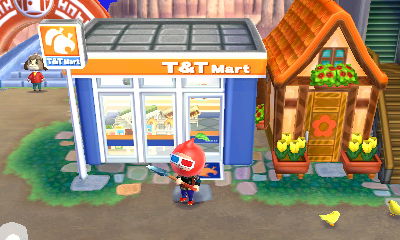
Your town will slowly upgrade its main street, but figuring out how to make it happen is nebulous at best.
Ordinances will allow you to dictate your town’s behavior. They can be enabled for a flat 20,000 bells and they will do anything ranging from giving you more money when you sell things in stores, to making shops open later or earlier in the day. You can, however, only have one ordinance available at a time.
When you’re not working on your mayoral duties you’ll likely want to spend some time working on your home. The game starts you off in a tent but over time you will be able to upgrade the home thanks to the affable Tom Nook. You can decorate the home with any furniture and items that you find throughout the game. As you design and grow the home you’ll become part of the returning Happy Home Academy or HRA. This group’s representative can be talked to every day and he will grant your house a particular score depending on how you’ve decorated. You’re rewarded for keeping things within a certain theme but also for being mindful of the game’s version of “Feng Shui” which involves making sure certain colors appear in certain places etc. Getting higher HRA Scores will grant you rewards that you can’t find anywhere else in the game.
While watching your town grow and expand can be fun it can also be frustrating. I ran into several occasions where Animals would move into the town and wind up directly blocking a public works project. One of my bridges is a constant source of annoyance because the stupid cat, Stinky, stuck his house square in its path during construction. Main street will upgrade itself as you spend money in each of the shops, but it’s hard to figure out what exactly you have to do to get something to upgrade. For example one shop will only upgrade after you’ve put 10,000 bells towards your home loan, spent 12,000 bells in their store, and been playing the game for at least 10 days. I know the goal is not to get all the upgrades as soon as possible, but it was frustrating making it to week three running my town and not seeing any progress.
The inventory management system is easily the most poorly designed part of the entire experience. You get 16 inventory slots at your disposal. As far as I am aware this number cannot be increased. Each tool you purchase will take up a slot, excluding the one that you hold in are actively holding in your hand. Switching through tools can be done on the fly by pressing left and right on the d-pad. You can’t change the order that you cycle through tools, and inevitably the one you want will always be the furthest away. There’s plenty of unused real estate on the touch screen, it would have been nice if they had given a shortcut bar to tap or something of that nature.
Your primary source of income throughout the game, is via planting and harvesting fruit. Fruit grows on trees in sets of two or three depending on its type. Again inventory management becomes tedious as you go and collect the fruit. The fruit is stackable, but only if you explicitly go into the menu and drag all the fruit into a pile. What inevitably happens is you’ll pick up too much fruit and fill up your inventory at which point you’ll be asked if you want to swap the item for something else in your pocket which you will drop on the ground. Say yes and you’ll be shown your inventory, but you can’t stack fruit there. You have to instead drop the piece you just picked up, then go into the inventory and stack everything again. You eventually adapt to the system by roughly counting how many slots you have left, or stacking your fruit like an OCD person, but at the end of the day it’s just not intuitive design.
My biggest complaint about this game is that most tasks feel slower than they need to be. Dialogue moves slow, you move slow, managing your inventory is slow. It’s all fine at first, but as you get more familiar with the game and know what you want to do when you log in it’s frustrating to have to wait. You can fast forward text, but of course this is a Nintendo game we’re talking about, and somehow even after decades have passed by they will still make the fast forward button in their games also act as the cancel button in menu items. I can’t tell you how many times I’ve sat through the museum curator’s spiel about donating items before accidentally canceling out of his dialogue. There’s no excuse for this to continue to be a problem in 2013.
Even with all that negativity the game is a joy to play. I opened the game on no less than three separate occasions to count the number of inventory slots for this review and completely forgot about it and just went about working on my town. The music and atmosphere are all perfect and happy. This game could pull the saddest person in the world out of some pretty serious funk. It is however best in small doses. Play for about 20-30 minutes a day and you’ll have a great time. Play for a four hour session and you might find yourself incredibly frustrated.
A small recommendation if your interest is piqued, pick up the game digitally. Because it plays best in small increments every day, having a digital copy will save you the trouble of swapping out carts every time you want to check on your town.


